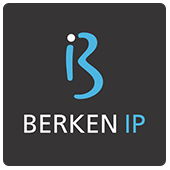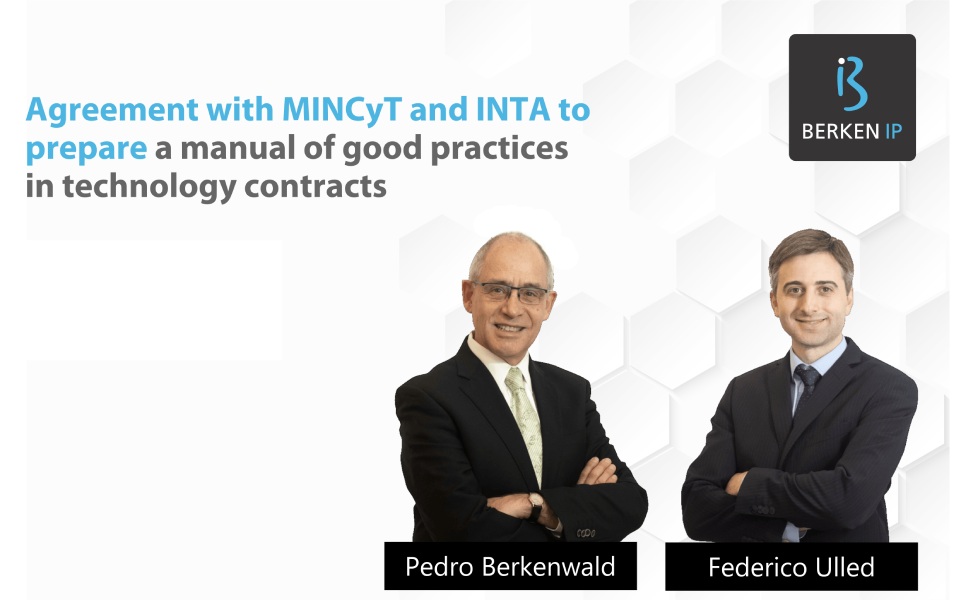

Agreement with MINCyT and INTA to prepare a manual of good practices in technology contracts
We were selected by the Ministry of Science, Technology, and Innovation to collaborate with the National Institute for Agricultural Technology (INTA) in the development of a best practices manual on drafting and negotiation of technology transfer contracts in the fields of agriculture, health, and Information Technology.
The manual aims to foster, harmonize, and elevate the standards in research, development, negotiation, and technology transfer capabilities at a national level between the institutions that make up the National System of Science, Technology, and Innovation (SNCTI) and the private sector.
Team members include:
Adolfo Luis Cerioni
Pedro Berkenwald
Federico Ulled
Germán Alejandro Linzer
Marcelo Labarta
Ezequiel Paulucci
Laura Cerioni
Gabriela Sofía Risso
Federico Cetrángolo
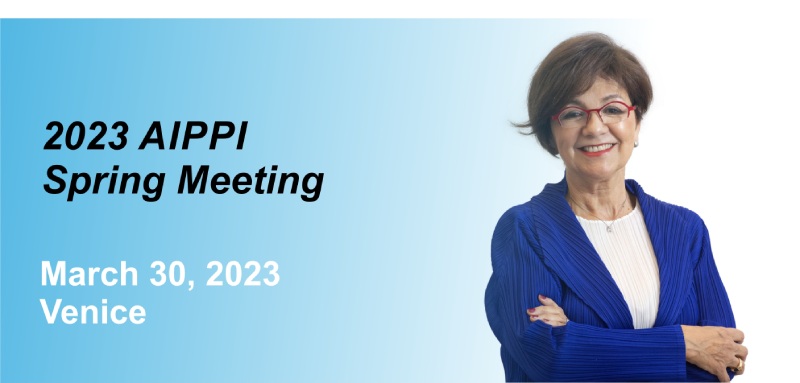

Alicia Alvarez-Berkenwald at Venice
Managing Partner Alicia Alvarez-Berkenwald is already in Venice to attend the first edition of the AIPPI Spring Meeting.
Looking forward to seeing friends and colleagues in this wonderful setting!
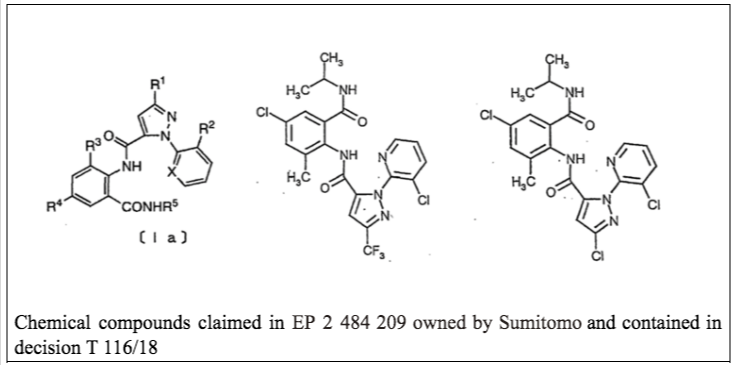

Plausibility before the European Patent Office
On March 23, 2023, decision G 2/21 was published regarding the “Plausibility” of an invention before the European Patent Office (EPO). According to the understanding of the EPO’s Enlarged Board of Appeal, the plausibility of an invention is related to the possibility of supporting a technical effect upon which the inventive step relies, through experimental data or evidence submitted after the filing of the patent application.
The filing of data or experimental results after the filing of a patent application is a common practice in the patent prosecution process. In general, these pieces of evidence of the inventive step are generally accepted when they support or clarify a result obtained through the invention. The acceptance of these pieces of evidence varies depending on the territory or technical area, but they are generally accepted when the technical effect being demonstrated is disclosed in the application as originally filed.
The Technical Boards of Appeal of the EPO, in several decisions, considered cases in which the technical effect was not explicitly disclosed but could be deduced or considered by a person having ordinary skill in the art based on the information of the patent application, regardless of their common general knowledge. In other words, they considered situations in which it was either credible or plausible, or it was not non-credible or implausible, that a certain technical effect could be obtained through invention disclosed in the application as originally filed.
In this context, decision T 116/18 referred three questions to the Enlarged Board. In summary, the questions aim to decide on the admissibility of evidence subsequently submitted when the technical effect is not explicitly disclosed in the application as filed, but when this effect would be considered plausible by a person having ordinary skill in the art based on the information of the patent application (ab initio plausibility), or when there is no reason for the skilled person based on the information of the patent application to consider this effect as implausible (ab initio implausibility).
To answer these questions, the Enlarged Board affirmed in G 2/21:
- Evidence submitted by a patent applicant or proprietor to prove a technical effect relied upon for acknowledgement of inventive step of the claimed subject-matter may not be disregarded solely on the ground that such evidence, on which the effect rests, had not been public before the filing date of the patent in suit and was filed after that date.
- A patent applicant or proprietor may rely upon a technical effect for inventive step if the skilled person, having the common general knowledge in mind, and based on the application as originally filed, would derive said effect as being encompassed by the technical teaching and embodied by the same originally disclosed invention.
With this decision, the EPO reaffirms its position regarding the evidence submitted after the date of filing of a patent application, and which intends to support a purported technical effect.
It is important to highlight that the Enlarged Board reminds that this approach is applicable for inventive step, but that according to the current practice of the EPO, it would not be applicable for the assessment of sufficiency of disclosure.
Furthermore, according to the Enlarged Board, plausibility is not a new requirement for patentability, as it is novelty, inventive step, industrial application, and sufficiency of disclosure, instead, it “rather describes a generic catchword seized in the jurisprudence” as a criterion to support a purported technical effect. The concept of plausibility would be already included and considered in all other requirements, for which is not necessary to amend the laws related to patentability.
There are some territories with very restrictive practices for accepting evidence submitted after the filing date of a patent application. For example, in Argentina, for the prosecution of patent applications in the pharmaceutical field, these subsequent submissions are generally not accepted. The effect that this new decision by the EPO will have on the practice of other territories remains to be assessed.


Patentability of polymorphs in Argentina: some thoughts in the light of recent rulings
On December 16, 2021, and May 3, 2022, Division I of the Argentine Federal Court in Civil and Commercial matters rendered two separate rulings – PFIZER PRODUCTS INC v. INPI, Case No. 3753/2016, and BAYER CROPSCIENCE AG v. INPI, Case No. 5631/2015, respectively – which are thematically associated, since both refer to the patentability of polymorphs. Both rulings are the result of different lawsuits filed by the applicants of two patent applications that were rejected by the Argentina’s National Institute of Industrial Property (INPI), seeking to reverse the corresponding rejection decisions. Even though the rulings at issue rule that the controverted decision must be upheld, it is interesting to analyze the arguments set forth therein.
In both rulings, even though the arguments raised differ in certain aspects, the courts essentially held that the arguments set out by the appellant, just as the technical expert evidence produced ex officio, fail to undermine the conclusions of the INPI’s Examiner appointed for each application, which in both cases can be summarized in: (i) a lack of novelty (and inventive activity in the case of Case No. 5631/2015) of the claimed matter in view of a document of the previous art that discloses the “base” chemical compound (that is, the compound as it was initially synthesized, without having the crystalline form of the polymorph claimed in each application); and (ii) the characterization of the polymorphs as a discovery, a matter that is not patentable pursuant to Article 6 of Law No. 24481.
In the first place, it is worth reviewing briefly what a polymorph is. The molecules of a solid chemical compound can adopt one or more stable and organized spatial dispositions that result in structures known as “crystalline”. When a crystalline compound can adopt more than one distinctive crystalline structure, these are known as polymorphs.
When a new chemical compound is synthesized, it is common to obtain that compound with a certain crystalline structure. However, what cannot be predicted beforehand is whether the new compound will show polymorphism. The obtention of new crystalline forms of an already known compound will often involve laborious research programs, since finding the specific conditions for the generation of a new crystalline form may be a difficult task.
The different polymorphs of a chemical compound usually have different physicochemical properties, which could make a particular polymorph preferable over another, for instance, when formulating a medication comprising the chemical compound at issue. As a result of such advantageous properties, it may be convenient to obtain protection for a new polymorph by means of a patent.
The Patentability Guidelines used by the INPI’s Examiners to examine patent applications clearly set a negative criterion with regards to the patentability of polymorphs. In this sense, in the section known as “GUIDELINES FOR THE PATENTABILITY EXAMINATION OF PATENT APPLICATIONS ABOUT CHEMICAL-PHARMACEUTICAL INVENTIONS” (from now on, “the Guidelines”), in the subsection associated specifically to polymorphs, the following is mentioned:
“Polymorphism is a property inherent to the solid form exhibited by drugs used in the pharmaceutical industry (active principles and excipients).
That is, it is not a man-made invention but a property of the substance instead.”
Said subsection concludes that:
“1. As long as claims about polymorphs stem from the mere identification and/or characterization of a new crystalline form of a substance that is already known in the state of the art, even when they show pharmacokinetic or stability differences with regards to the already known solid forms (amorphous and/or crystalline) of the same substance, such claims are not admissible.
2. The processes used to obtain polymorphs constitute a routine experimentation in the preparation of drugs; they are not patentable because trying to obtain the pharmaceutically most adequate polymorph by means of conventional methods is evident.”
That is, according to what is described in the Guidelines, a polymorph would not be an invention, instead, it would be the discovery of an inherent property of a substance that was previously known and, consequently, not patentable. Furthermore, the processes used to obtain polymorphs would lack inventive activity in a general manner, a reason for which they would not be patentable either.
Considering what was analyzed in the previous paragraphs, two aspects of the rulings at issue are particularly remarkable.
On the one hand, it is worth noticing that in both administrative procedures the Examiner of each application has raised not only an objection of exclusion from patentability of the discoveries, which, while being debatable, turns out to be consistent with what is established in the Guidelines, but also an objection of lack of novelty, when the documents of the previous art already mentioned do not disclose the claimed polymorph in each case (it is worth highlighting that in both cases the cited document belongs to the same applicant as that of the application in controversy, therefore, it is to be expected for said applicant to perfectly know that they have actually obtained a previously unknown polymorph). The INPI seems to construe that the disclosure of a chemical compound leads to, implicitly, the disclosure of any crystalline form thereof.
On the other hand, we consider it relevant that in both cases the court sets out the inability of the arguments set forth and, in particular, of the court’s technical expert evidence produced ex officio, to disqualify the technical opinion of the Examiner of each application, mentioning that a mere contrary opinion is not sufficient, and that, instead, it must be shown that the Examiner incurred in an error in the assessment of the claimed matter. Thus, when posing questions to a court appointed expert in a litigation that seeks to reverse a rejection decision from the INPI, such questions must be posed in such a way that the alleged errors identified in the manner in which the Examiner examined the application come to light. In this sense, it is of great importance to develop an appropriate strategy.
Our experts are available to debate protection and litigation strategies in line with the needs of each inventor or patent applicant.
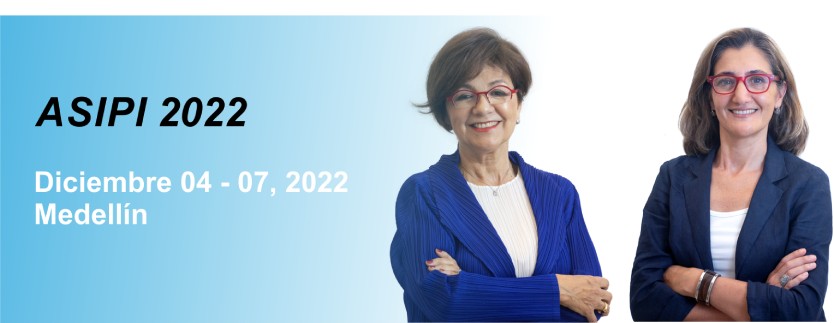

ASIPI Meeting 2022
Our Partners Alicia Alvarez Berkenwald and María Aurora García will participate in ASIPI’s XXIII Jornadas de Trabajo y Consejo de Administración that will take place in Medellín on December 04 to 07, 2022.
“The city of eternal spring” and cradle of innovation, is the ideal setting to meet up with friends and colleagues.
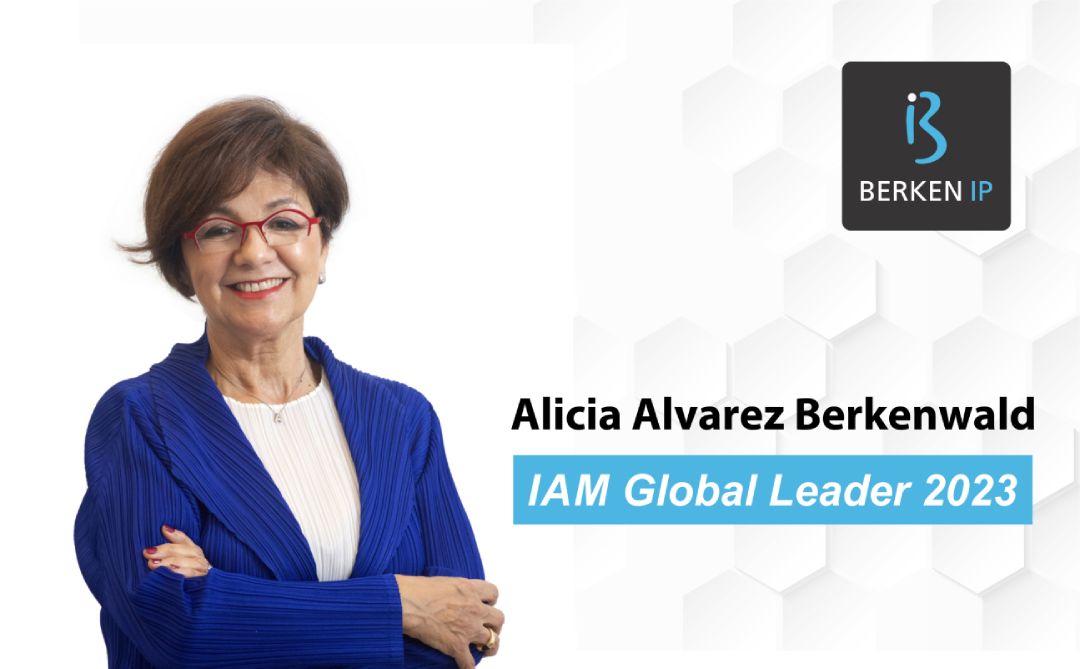

Alicia Alvarez-Berkenwald listed in IAM Global Leaders 2023
She did it again! Managing Partner Alicia Alvarez-Berkenwald has been listed for a third consecutive year as a leading global patent practitioner in the 2023 IAM Global Leaders Guide launched on November 21, 2022.
Take a look at the full list: https://cutt.ly/FM4McBp


Emilio Berkenwald at AIPLA 2022
Partner Emilio Berkenwald attends the 2022 AIPLA Annual Meeting in National Harbor, MD. This year, AIPLA celebrates 125 years!
#intellectualproperty #patents #patentlaw


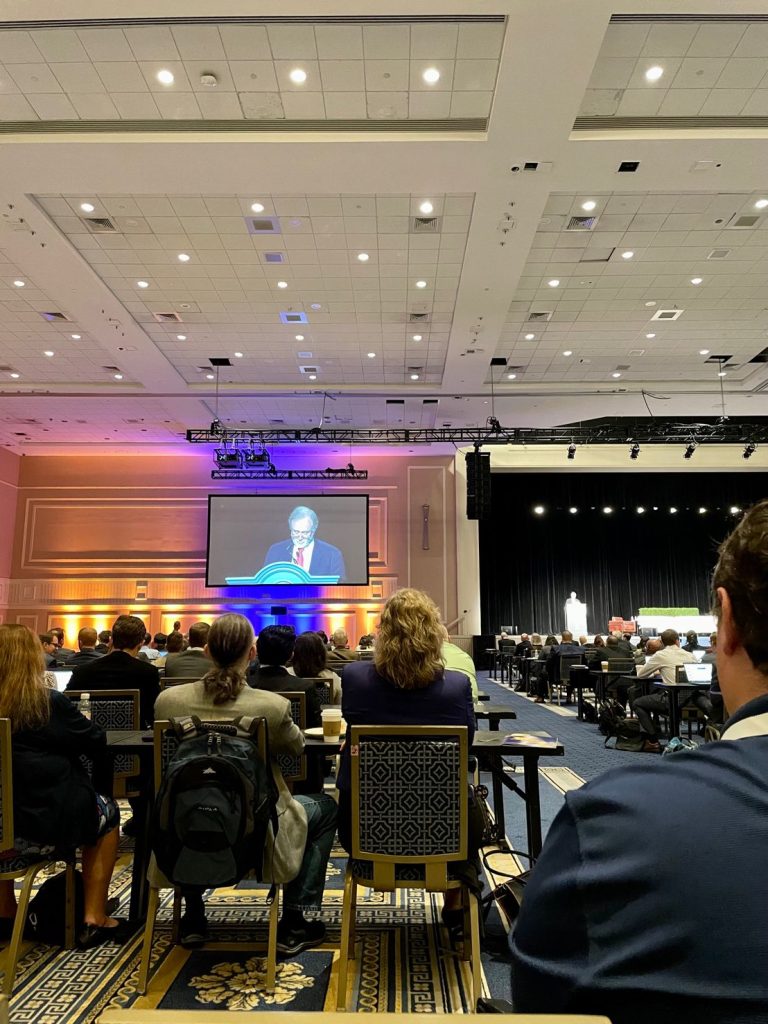



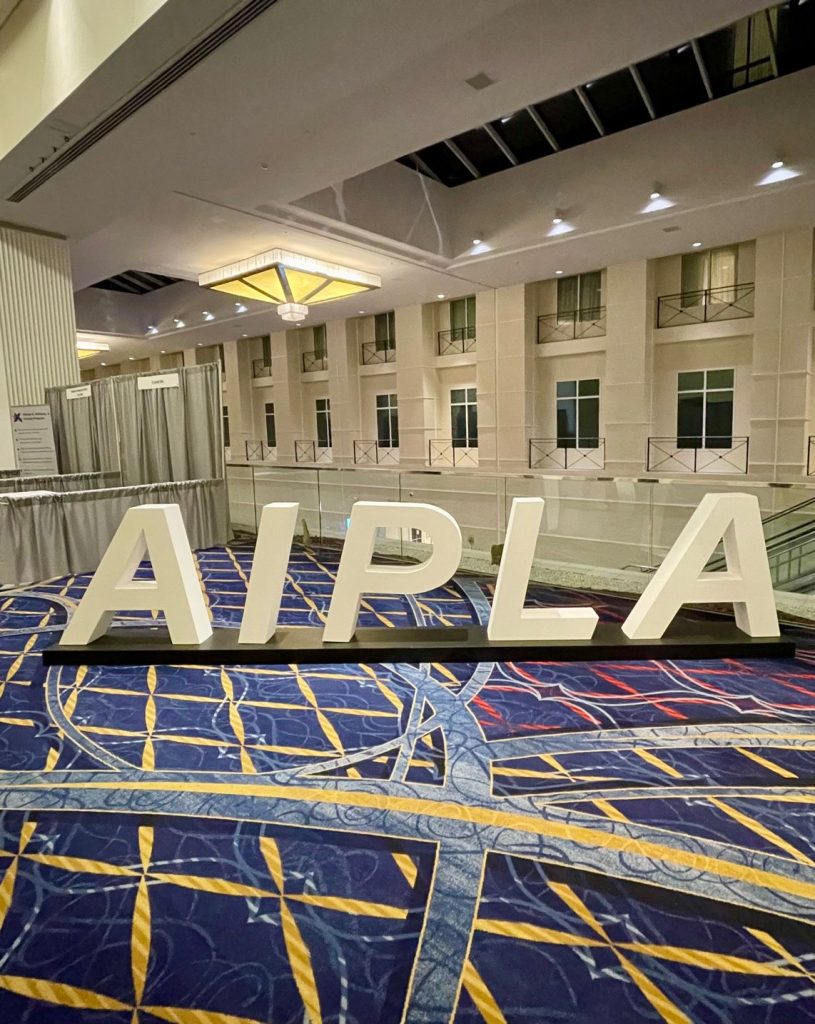

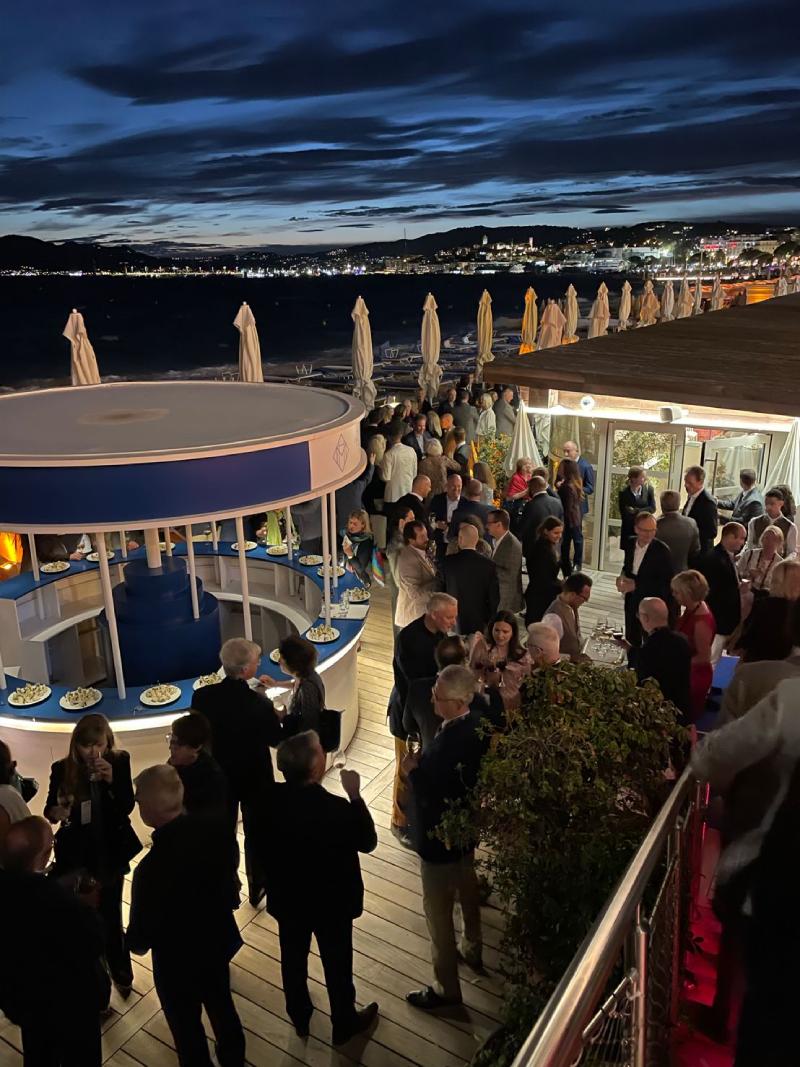

2022 FICPI World Congress
Pleasure and work get together in Cannes!
#FICPI #intellectualproperty #patents #patentlaw


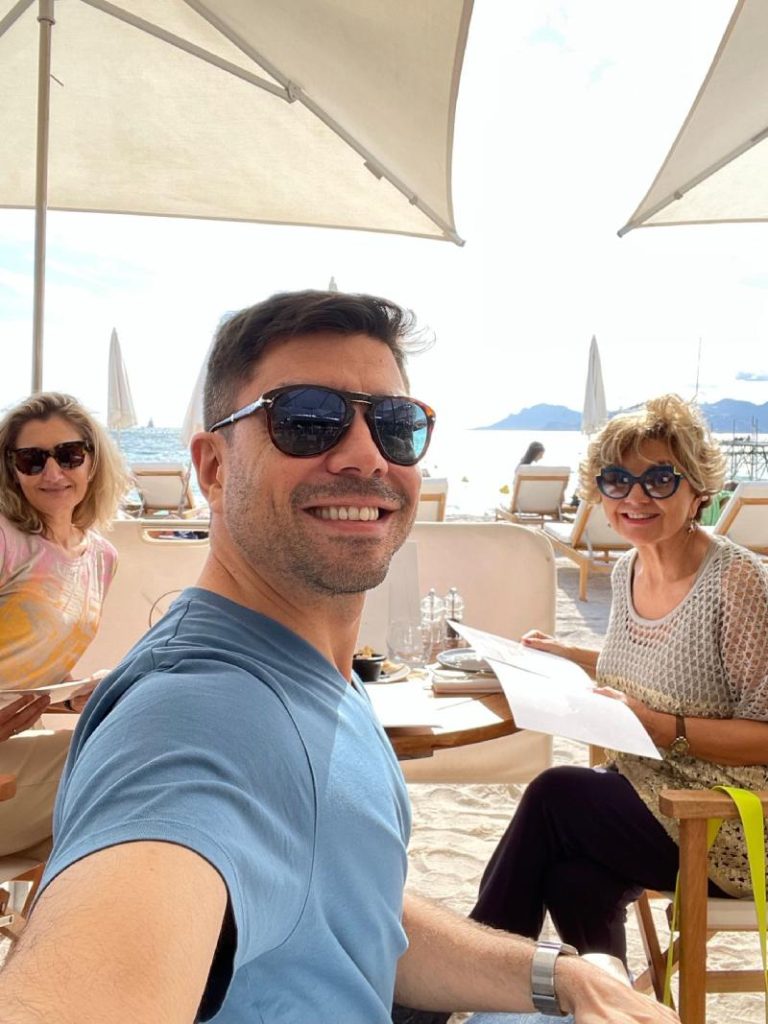

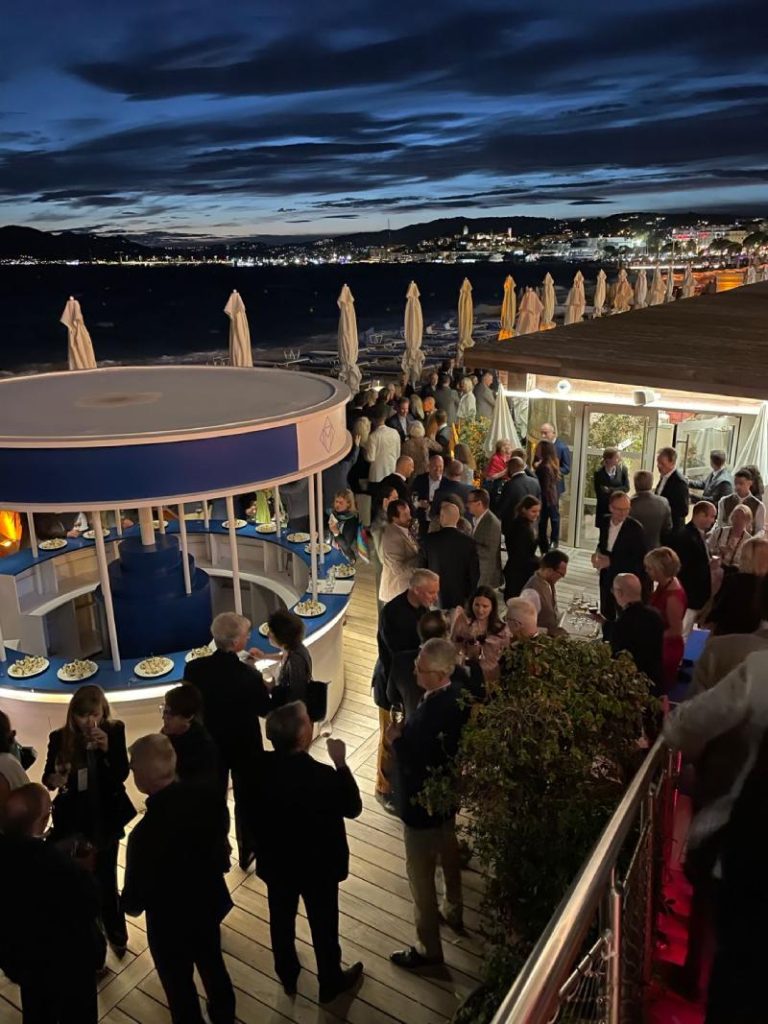

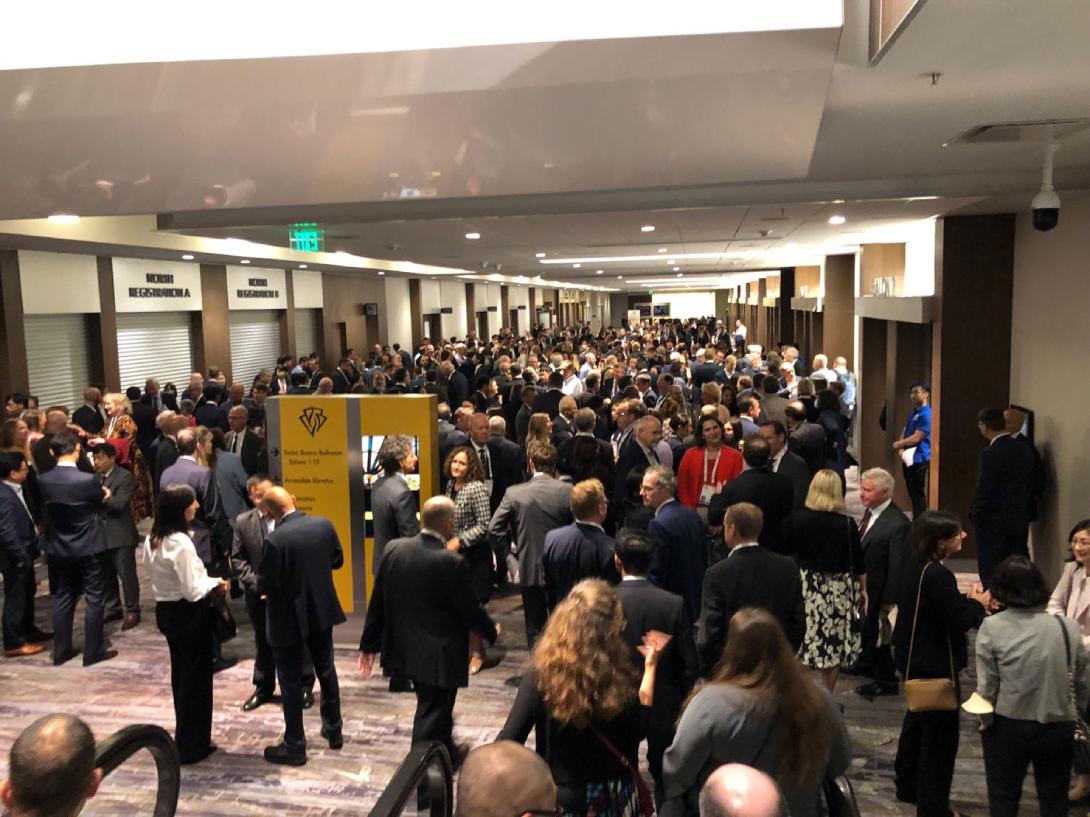

2022 AIPPI World Congress
San Francisco was a beautiful venue for going back to in-person meetings!
#AIPPI #intellectualproperty #patents #bayarea #congress


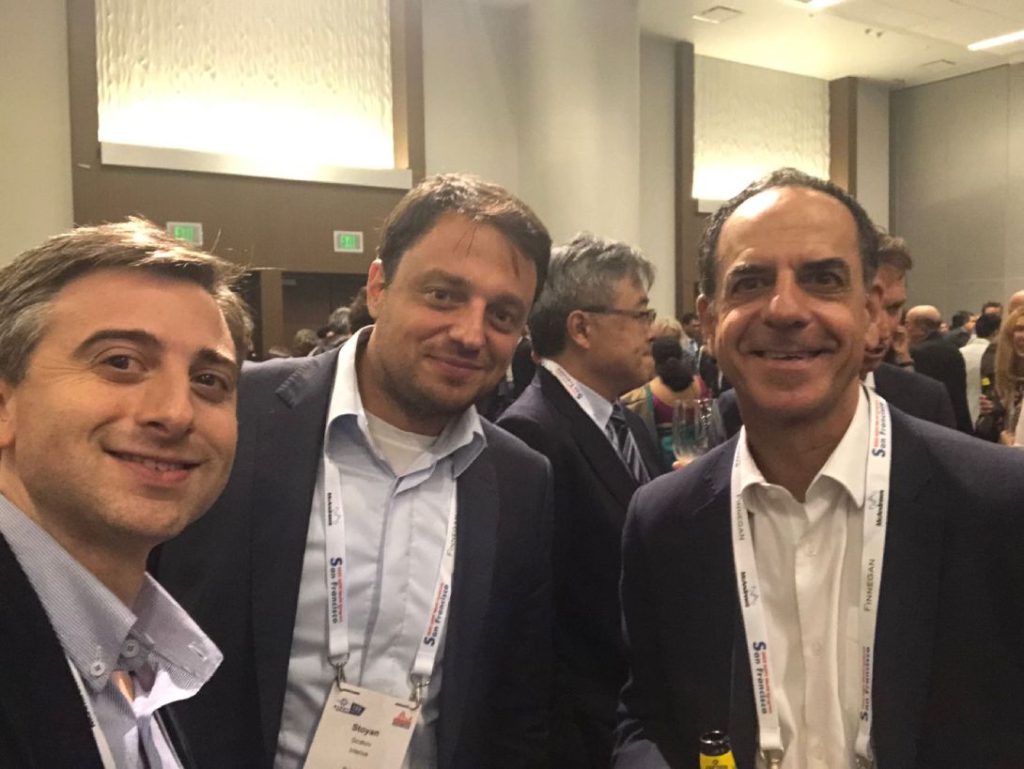



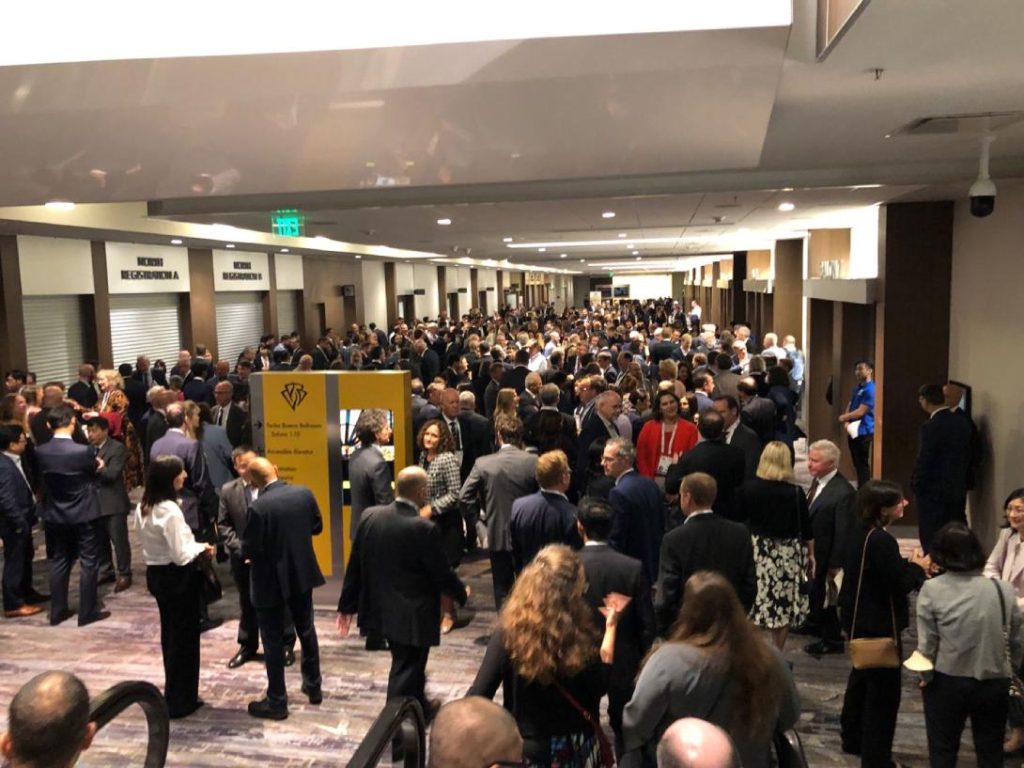

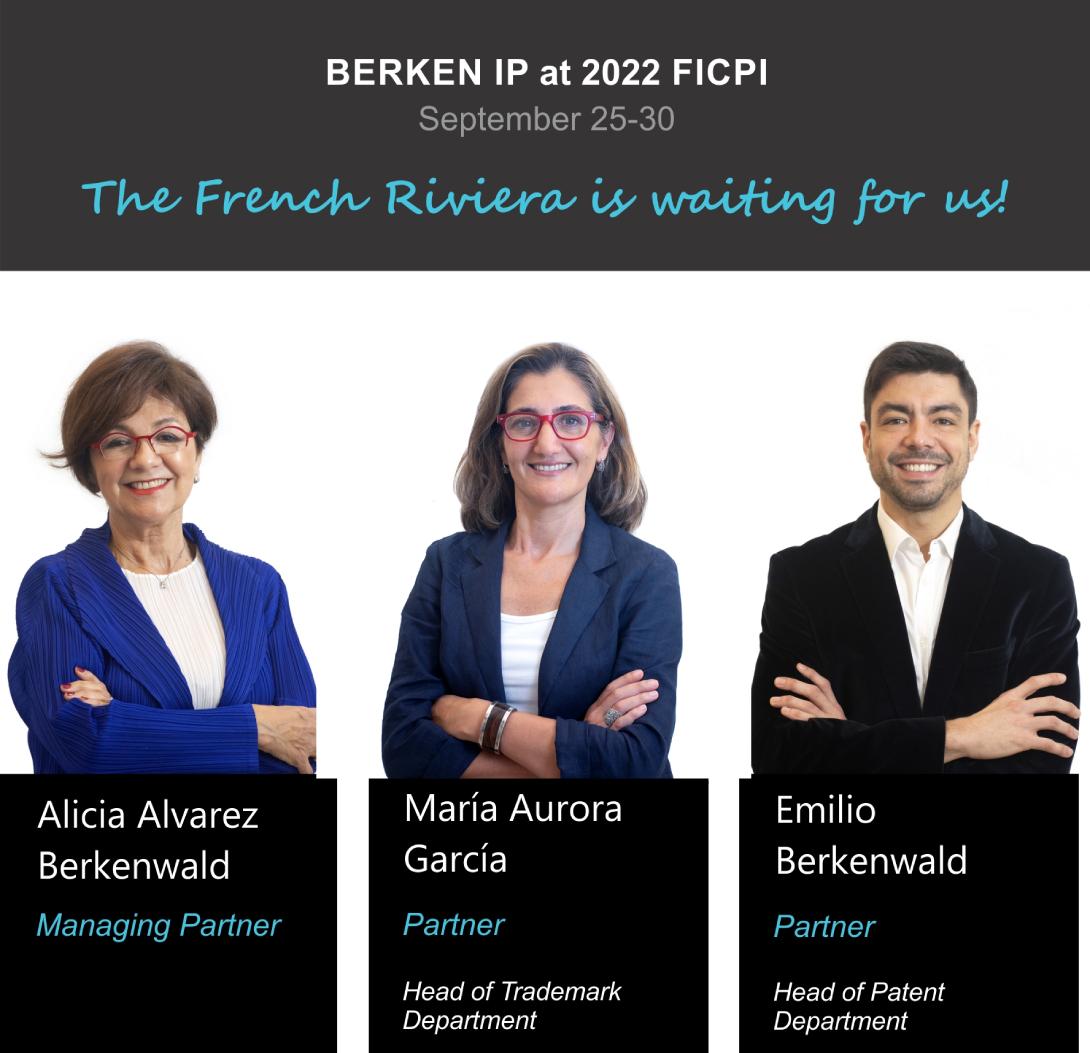

2022 FICPI World Congress
The 2022 FICPI World Congress is Cannes is coming up soon and our partners in attendance Alicia Alvarez-Berkenwald, María Aurora García and Emilio Berkenwald are very much looking forward to reconnecting with friends and colleagues in this wonderful venue.
If you are interested in meeting with them, please send us an email to [email protected] indicating your availability and we will be glad set up an appointment.
#FICPI #intellectualproperty #patents #patentlaw
